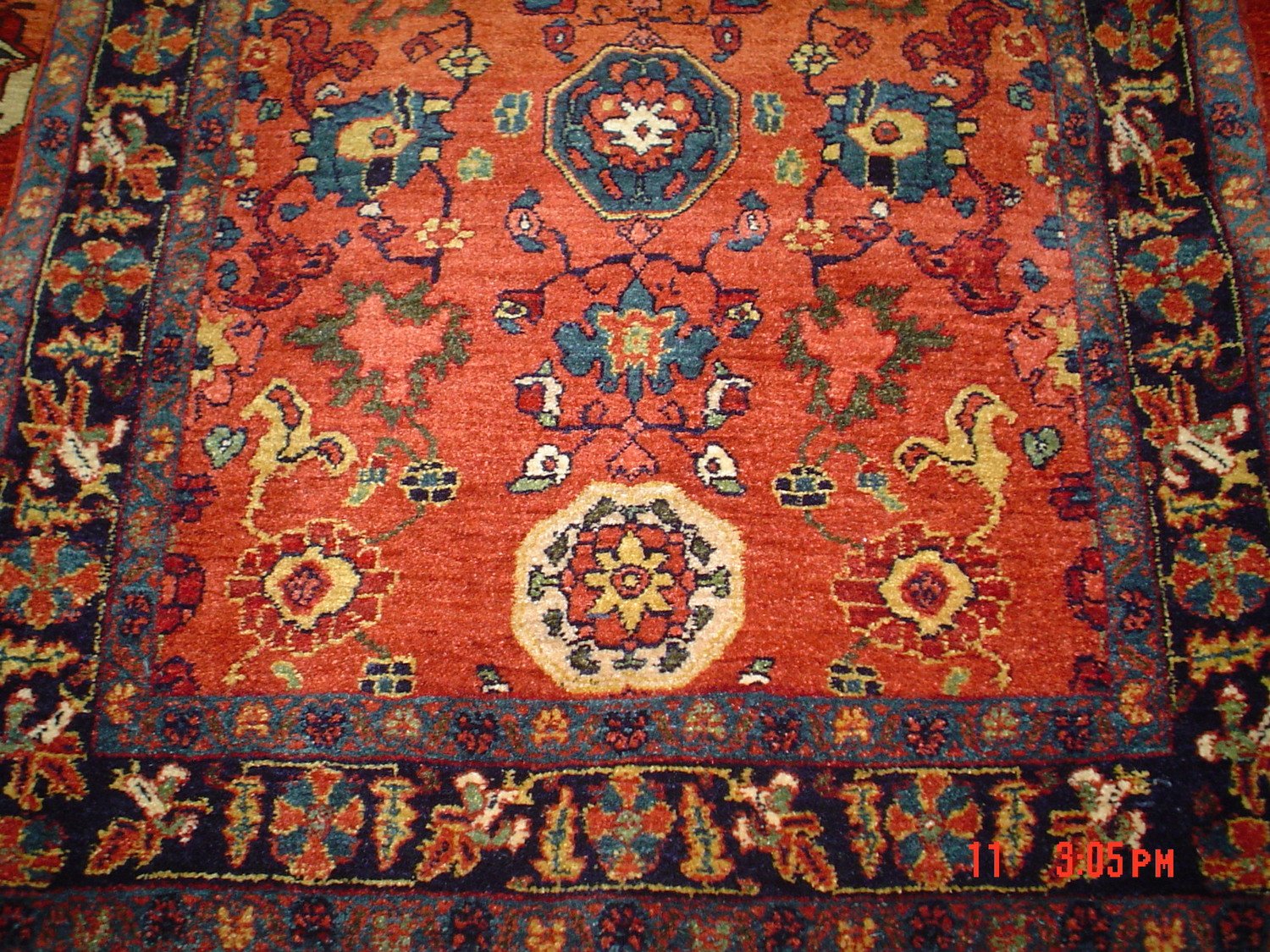Why Tribal Rugs are an Interior Decorator's Dream! By Penny Krieger ©2008-2024
First of all, I will clarify what exactly a tribal rug is by giving you a simple definition.
Tribal Rug: A rug woven by nomadic or pastoral people based on traditional motifs woven with hand-spun wool. Tribal rugs were originally woven on wooden looms set up on the ground to be dismantled and reassembled while traveling. Normally a tribal rug will have a lower knot count and a geometric pattern versus the tightly woven symmetrical floral styles usually found in rugs produced in the larger cities. Older or antique tribal pieces will most often be woven with a wool foundation with plant-based dyes. Tribal pieces would also include textiles woven to be used in daily life. This includes any pieces used inside or outside of nomadic dwellings or as animal trappings; functional or decorative. A few examples are tent bands, saddlebags, salt bags, etc.
The above definition is from my Oriental Rug Definitions on my web site.
Here are a few quintessential tribal rugs just to give you a concept. All three of these pieces are different but still exude a certain classic tribal beauty and timeless appeal.
This first piece is a small 3 x 5 Persian Bijar. Bijar rugs are known as the iron rugs of Iran for the simple reason that their construction has proven them to be extraordinarily durable.
This particular piece was recently woven by Kurdish weavers in Iran. It is one of the most famous older Kurdish rug designs which is known as the Garros design.
I can see it as an entryway piece in a sleek modern interior or as an accent piece in a traditional living room.
In homes filled with antiques, tribal rugs work their magic every time. I have a number of books filled with famous, historic interiors throughout Europe and the US and it was not uncommon in these estates to mix and match tribal rugs
This next piece is called a Serapi. This is an American (rug dealer’s) term for the antique and more finely woven Heriz rugs that also characteristically have softer tones and more open space in their drawings. As you can see, most tribal rugs have a geometric feeling to their designs, even when based on floral motifs
I sold a similar piece to a client in Portland a few years back. The living room was huge and more like a great room which included a dining area and an open view of the kitchen. The wooden floors had a dark stain. The ceilings were high, there were two walls that were mostly windows, the kitchen had tons of chrome and looked like a chef’s dream. This was a penthouse apartment in what is known as The Pearl in downtown Portland and the building was relatively new. The interior was quite contemporary but the client's furnishings were eclectic. We got the rug in place and it tied the whole room together and really brought it to life.
This last piece is one of my favorites. This is a Persian Luri. This type of design is called an “overall” design as it has no central medallion but a repeating of the vase throughout the field (central part) of the rug. Notice the colors of the vases change whimsically, adding a charming unpredictability to this piece. Rug collectors, me included, love to compare the right and left sides or even the top and bottom halves of a rug and find differences in the design. When a weaver can pull this off (maintaining balance and continuity with the colors working harmoniously together) the piece moves into the stratosphere of woven art, particularly if the wool is of good quality and the weaving skilled.
When decorating with Oriental or Persian rugs do not hesitate to use your imagination!
Rugs do not have to exactly match each other but their moods and colorways should be similar. When contemplating a purchase think of the emotional response you like to experience and then look for a rug that elicits that feeling from within you.
Examples of this would be: comfortable, warm and homey, understated, minimalist, clean and simple, abundant or affluent, elegant, luxurious, casual, etc. Look at many rugs (view our Oriental Rug Gallery) and eventually you'll get it. It, being an understanding of what your type of rug is. When that occurs you will then be able to choose a rug with confidence.
I genuinely feel that tribal rugs are the most versatile of all Oriental rugs. The quality pieces, woven with hand-spun wool and vegetable dyes, exude a natural beauty to almost any interior.
The design choices in tribal rugs are abundant and fascinating minimally so that one can achieve a very personal signature to their home environment.
Hopefully this will give you a bit of insight into finding a beautiful tribal rug for your home.
Penny Krieger is the owner of Paradise Oriental Rugs, Inc., located in Walla Walla, WA. Her gallery specializes in tribal rugs and carpets woven with hand-spun wool and plant based dyes with a strong emphasis on Persian rugs and tribal designs woven in Afghanistan. She is now selling rugs on an appointment basis at her private studio. For more info please have a look at her website: https://www.paradiseorientalrugs.com Phone: 707-823-3355



